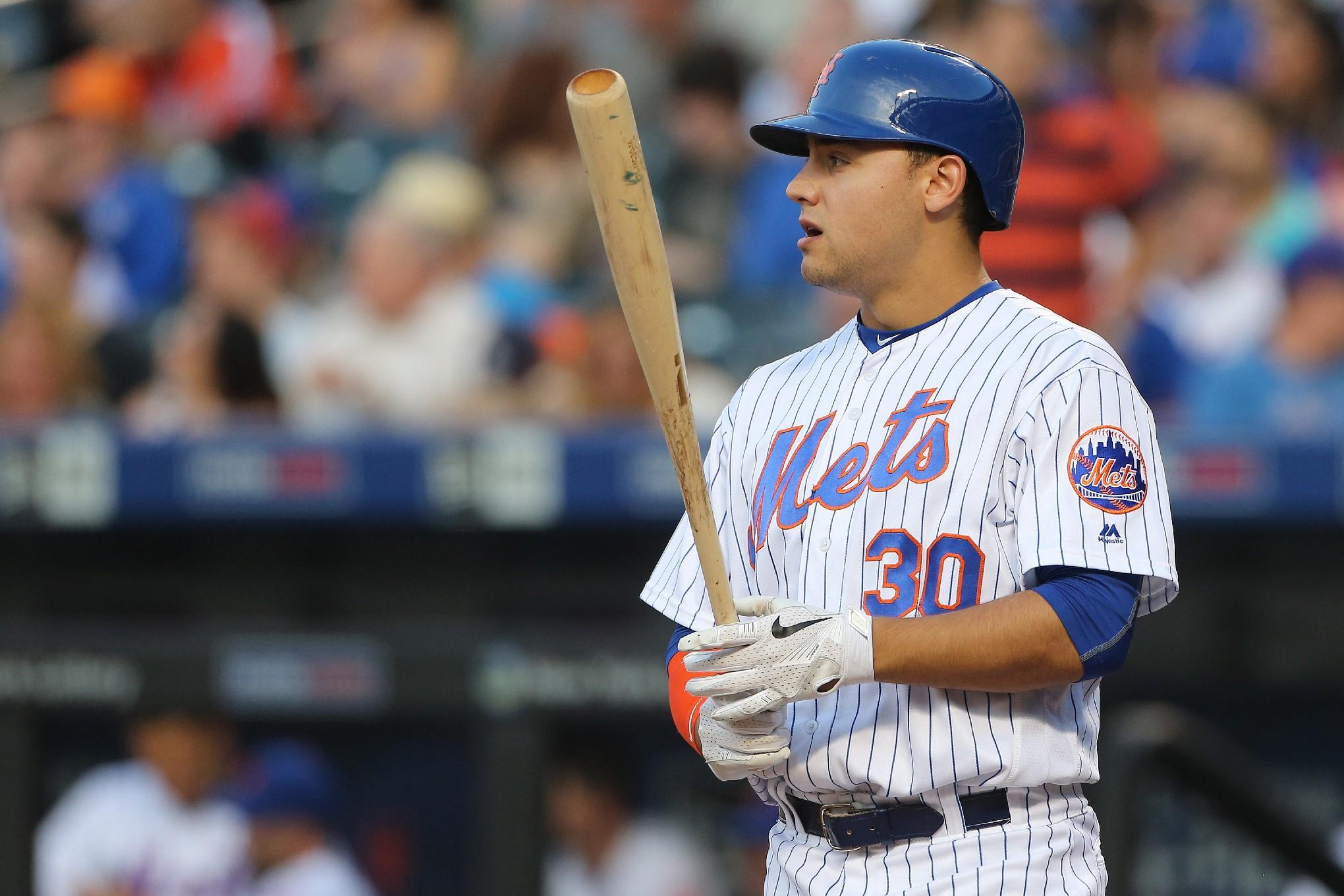About three weeks ago, the Mets sent outfielder Michael Conforto back down to Triple-A to sort himself out after a monthlong slump. Now that Conforto’s back up with the Mets, manager Terry Collins is going to have to solve a familiar problem: finding a place for him to play.
With all the hoopla surrounding the pitching staff, it’s easy to forget that for a ramshackle outfit made up of aged veterans and no-names, the Mets had a pretty good lineup by last season’s end. After losing Daniel Murphy to the Nationals in free agency, the Mets picked up Asdrubal Cabrera and Neil Walker (both of whom currently boast an OPS+ right around 100) to man the two middle infield positions, and Alejandro de Aza as an extra outfielder. Bemoan the loss of Murphy and his .350/.388/.608 line all you like, but that’s a defensible offseason on the aggregate, if you consider that nobody thought Murphy would leave for Washington and immediately turn into Rogers Hornsby. What it didn’t do is solve New York’s lineup imbalance, which is why Conforto doesn’t have a home.
To put it bluntly, New York’s outfield is very corner-heavy and very left-handed at the plate. All three of their best outfielders — Conforto, Yoenis Céspedes, and Curtis Granderson — lack the range of an ideal center fielder. Céspedes has played center for the past 12 months out of necessity, but even he’s looking for a chance to move back to left to ease the toll on his body. Conforto, who’s just fine in a corner, doesn’t have the wheels to play center, and, at age 35, neither does Granderson. The Mets could put Juan Lagares out in center every day and move Céspedes to a corner, but that means sacrificing either Conforto or Granderson for an inferior bat.
A platoon wouldn’t solve the problem either, because Céspedes is so good that you can’t platoon him, and both Granderson and Conforto are left-handed hitters. And the Mets can’t work first base into a platoon because first baseman James Loney and the man he replaced, the injured Lucas Duda, are left-handed hitters as well. Loney’s 109 OPS+ isn’t ideal for a first baseman, but it’s fine, and he serves the Mets better there as a two-way player than would Conforto or Granderson, either of whom would have to learn the position on the fly. David Wright’s back injury opened up a hole at third, a position Conforto played briefly at Oregon State, but even at the college level Conforto took to third base about as well as you’d imagine he’d take to playing in a cloud of bees full-time.
All of this makes the acquisition of de Aza quite puzzling: The Mets knew about the corner outfield logjam and spent $5.75 million on a left-handed hitter who’s only played center field this year because it’s a free country, and the Constitution doesn’t protect us from our own bad decisions. De Aza, who’d posted an even 100 OPS+ from 2013 to 2015, offered a skill set that overlapped completely with Granderson’s and Conforto’s without being better than either at anything in particular. With de Aza hitting .180/.254/.270 so far this year, that move looks even worse. He does nothing to solve the Mets’ roster flexibility problem — and that’s hurting the development of their best young position player.
The Mets spent a top-10 pick on Conforto two years ago because he was the most polished all-around hitter in his draft class — at least as mature at the plate as, and more of a sure thing than, Kyle Schwarber. Whatever defensive value Conforto brings to the table as an outfielder is a bonus; he exists to hit, first and foremost. And hit he did, posting a 130 OPS+ as a 22-year-old rookie last year.
Except he’s still young, which means he needs consistent playing time to develop into the best player he can be. He shouldn’t even be part of a platoon, as he needs to play more or less every day and not be shielded against lefties. So far with the Mets, that hasn’t happened. The most alarming thing about Conforto’s career big league splits isn’t that he’s got a career .282 OPS against left-handed pitchers, it’s that only 62 of his career 437 plate appearances have come against lefties. He’s never going to learn to hit big league lefties without practice and, indeed, game reps. Even if that hurts the Mets a little in the short term (and since Conforto’s 93 OPS+ in 2016 represents such a huge step back from expectations, I’m not convinced it will), Conforto’s a special enough talent that he’s worth nurturing at the expense of the present.
Calling up Conforto and playing him every day doesn’t help the Mets keep Céspedes healthy, nor does it help them defensively. But however much he struggled earlier this year, Conforto should still be an offensive upgrade over Lagares, and if he’s in the lineup every day, he’s more likely to hit the peak of his potential, and to do so quickly, which would ultimately help the Mets more than anything else.
There might not be an obvious landing spot for Conforto in New York’s lineup, but it’s imperative that the Mets find one anyway.
